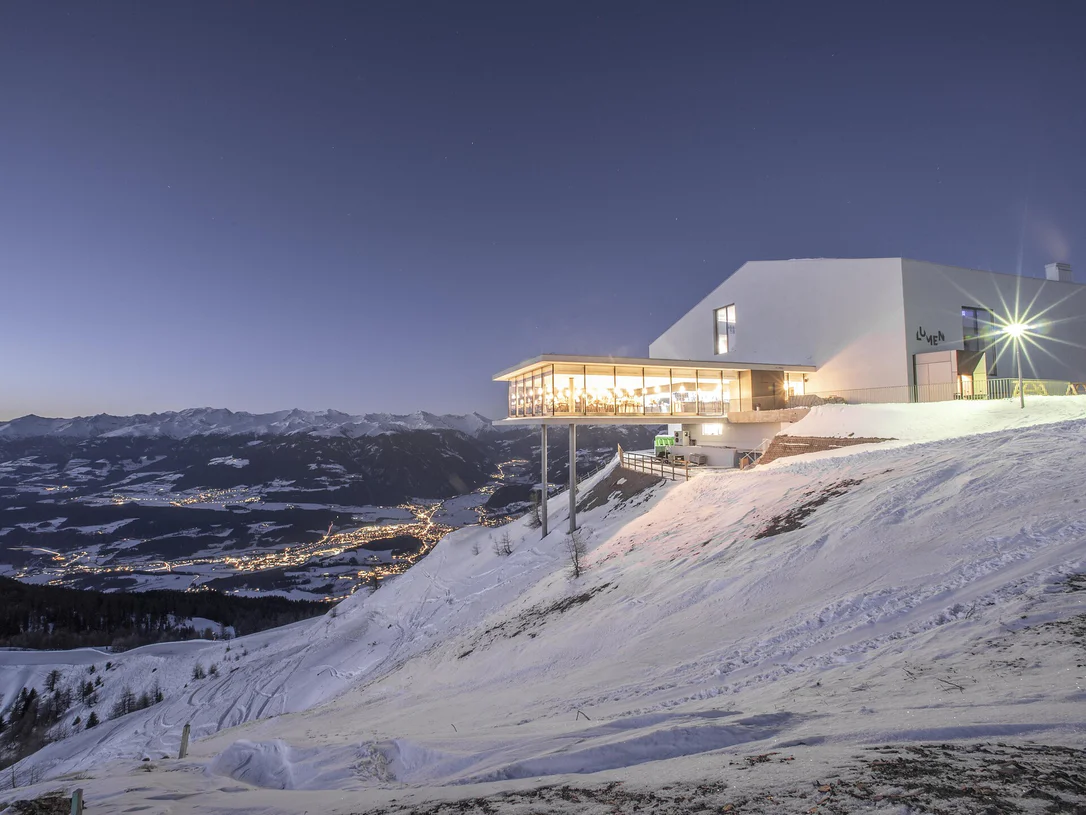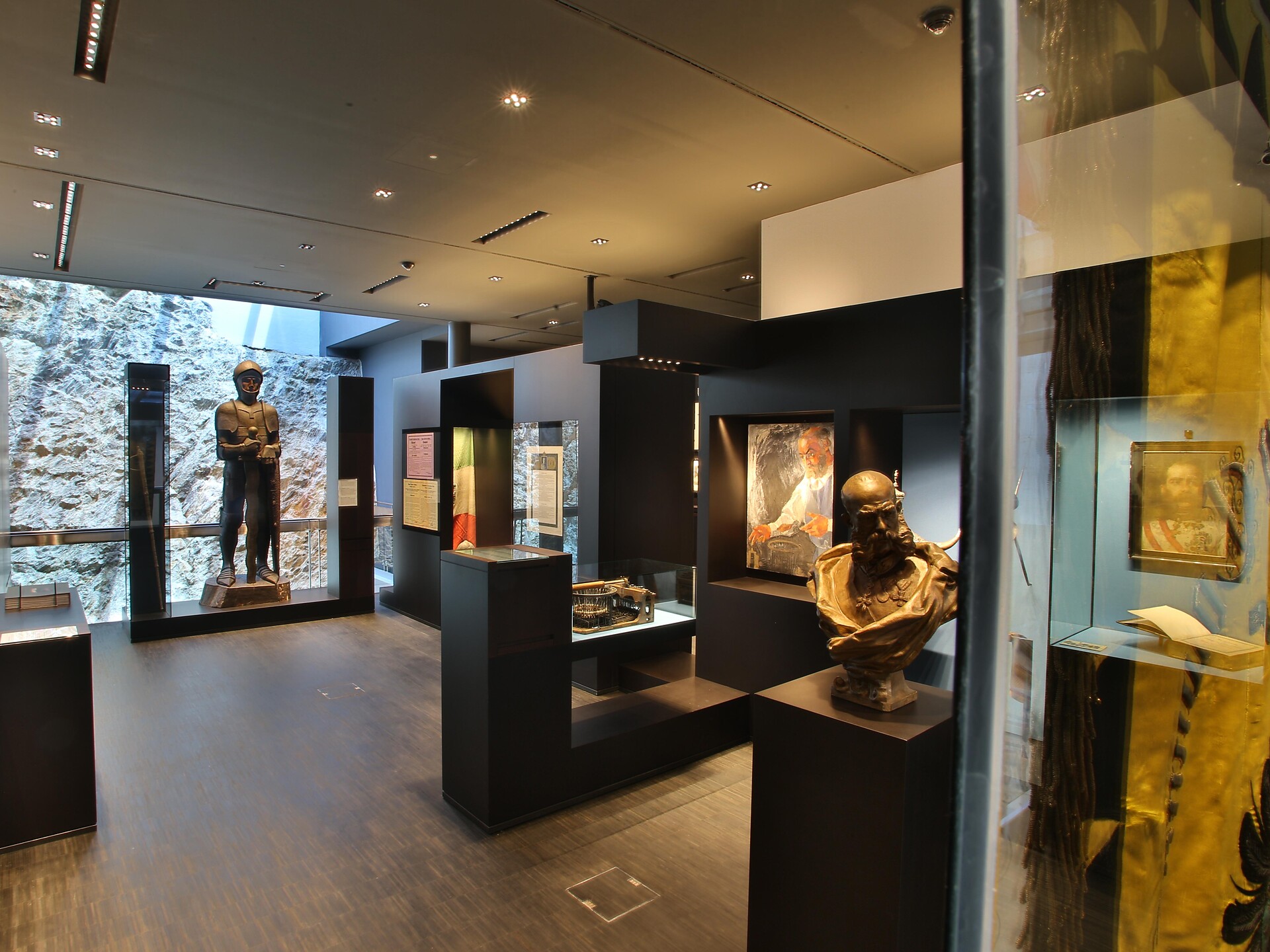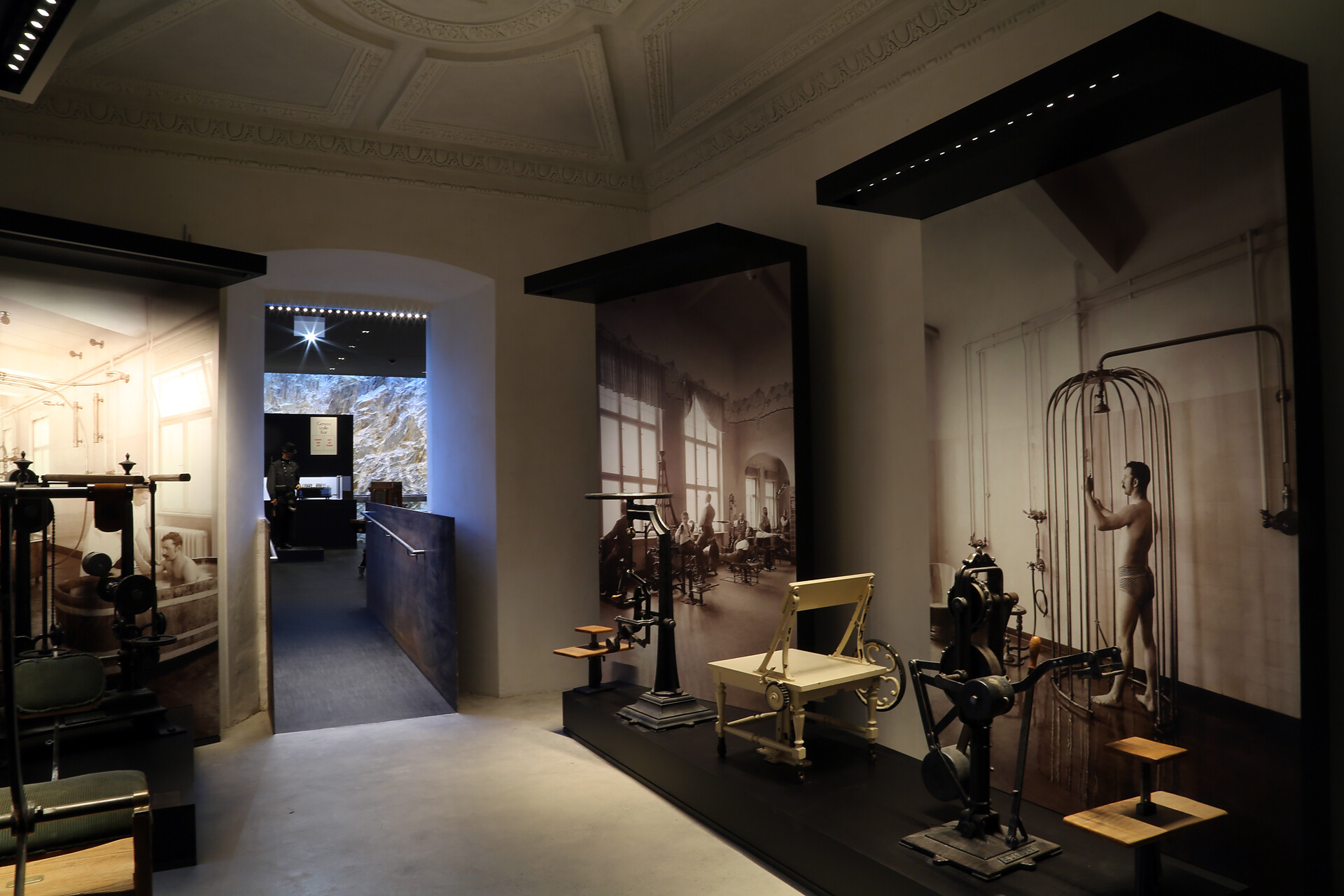The Knottnkino (Rock Cinema) is the work of artist Franz Messner, who hails from Renon. The Knottnkino sits atop a red porphyry rock formation, Rotstein Knott Mountain, which is located in Vöran/Verano on 1,457 metres.
The lookout point, outfitted with thirty cinema seats made of steel and chestnut wood, is a wonderful place for hikers to take a seat, unwind, and enjoy a unique experience: nature as cinema. The site overlooks the whole of the Adige Valley so visitors enjoy stunning views that encompass the Texel Group Nature Park, Mount Penegal, and even Corno Bianco/Weißhorn Mountain farther afield.
In the local German dialect spoken in South Tyrol, Knottn means ‘rock’. Millions of years ago, when lava and falling ash formed the Tschögglberg Mountain Plateau, these round, wine-red knolls also came into being. These rock formations are unparalleled in South Tyrol. In Verano, there are three: Rotstein, Beimstein and Unterstein Knott.
The Knottnkino³ circuit trail conects the three red porphyry rocks of Vöran/Verano. Starting from the Burgstall-Vöran upper cableway station, the trail leads to the three panoramic landmarks of Verano: the Rotstein, Beimstein and Timpfler Knott.





































































































